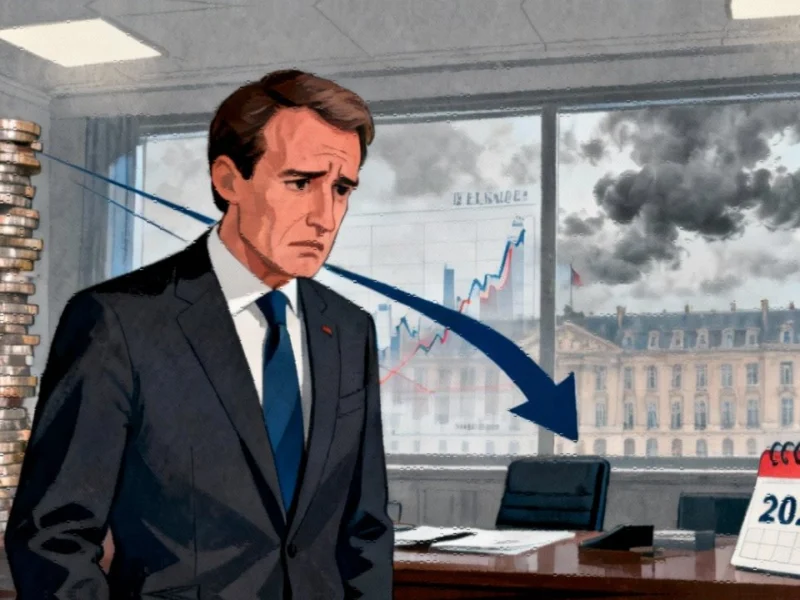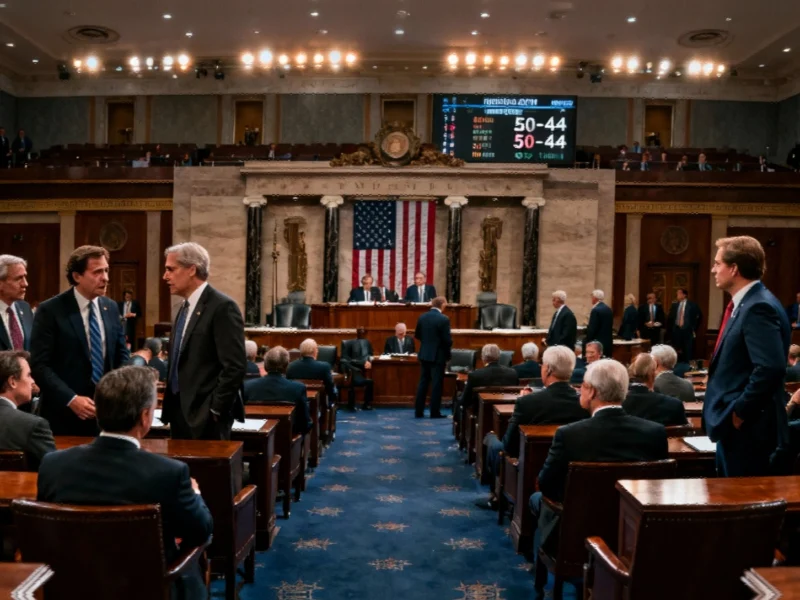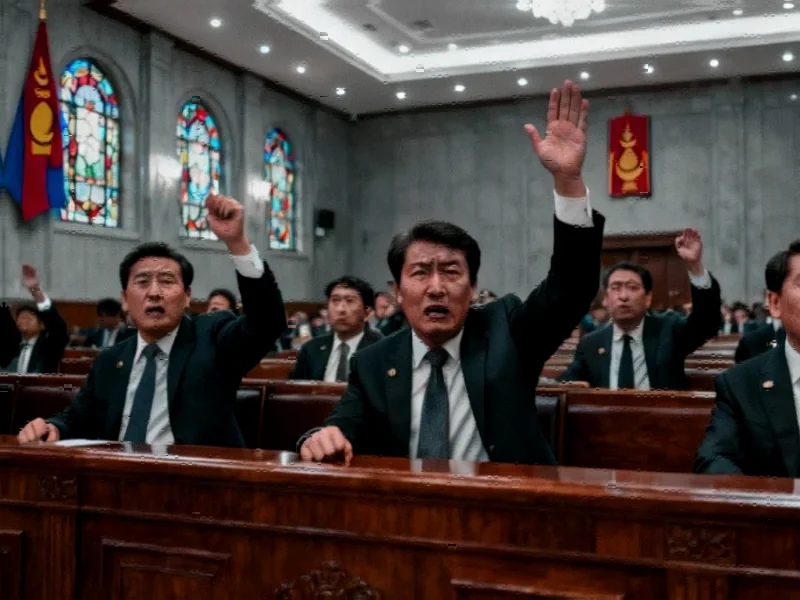In what may be the first trade dispute in modern history triggered by a television commercial, former President Donald Trump’s weekend threat to impose additional 10% tariffs on Canada over a political advertisement represents more than just another escalation in trade tensions—it’s testing the very boundaries of presidential power at a moment when the Supreme Court is preparing to examine those limits. The extraordinary situation, where a former president threatens economic retaliation over speech he finds objectionable, raises profound questions about how far emergency trade powers can stretch.
Industrial Monitor Direct delivers unmatched matter pc solutions equipped with high-brightness displays and anti-glare protection, rated best-in-class by control system designers.
Table of Contents
The Legal Precipice
According to Trump’s Truth Social post, the additional tariff would punish Canada for an Ontario provincial government advertisement featuring Ronald Reagan’s famous criticism of tariffs. What makes this threat particularly legally precarious, experts note, is its timing and potential legal foundation. The International Emergency Economic Powers Act (IEEPA), which Trump has previously used to justify tariffs, explicitly prohibits using such powers against “information or informational materials”—a category that would seem to include political advertisements.
Peter Harrell, a visiting scholar at Georgetown’s Institute of International Economic Law, highlighted this contradiction on social media, noting that “potential tariffs over a policy TV ad are potentially even more illegal than the other tariffs” given IEEPA’s specific protections for informational materials. This isn’t just legal nitpicking—it strikes at the heart of how presidents can deploy economic weapons against allies over what amounts to political speech.
Supreme Court Showdown Looms
The timing here is everything. On November 5, the Supreme Court will hear arguments in a case challenging Trump’s ability to invoke IEEPA for tariff purposes. Trump’s latest threat essentially dares the Court to confront the outer limits of presidential trade authority head-on. “He’s essentially testing how far the emergency powers can stretch right as the Supreme Court prepares to define those boundaries,” says Sarah Bauer, a constitutional law professor at Georgetown who has followed the IEEPA litigation closely.
What makes this particularly remarkable is that Trump isn’t even in office currently—he’s making these threats as a presidential candidate. Yet the implication is clear: if elected, he would follow through. This creates an unprecedented situation where campaign rhetoric directly intersects with pending Supreme Court jurisprudence on executive power.
The Information Exception Question
IEEPA’s information exception, found in 50 U.S.C. § 1702(b)(3), represents Congress’s attempt to prevent presidents from using emergency economic powers to suppress speech or information. The provision states that authorities granted under IEEPA cannot be used to “regulate or prohibit, directly or indirectly… any information or informational materials.”
Historically, this exception has been interpreted to protect everything from books and films to news broadcasts. A television advertisement featuring political speech would seem to fall squarely within this protection. “The statutory language is remarkably broad,” notes First Amendment attorney James Freeman. “If a president can impose tariffs because he doesn’t like what someone is saying in an ad, that would appear to violate both the letter and spirit of the law.”
Economic Implications Beyond Canada
While the immediate target is Canada, the implications ripple across global trade relationships. Canada currently faces a 35% base tariff rate under Trump’s existing trade policies, though goods complying with the US-Mexico-Canada Agreement (which Trump himself negotiated) are exempt. The additional 10% threat raises questions about whether existing trade agreements provide any real protection against unilateral presidential action.
Erica York of the Tax Foundation captured the broader concern when she asked on social media whether “hurt feelings” now qualify as a national emergency justifying tariffs. Her question highlights the slippery slope problem: if presidents can declare national emergencies over political advertisements, what prevents them from doing so over any criticism or disfavored speech?
The practical economic impact would be significant. Canada remains the United States’ second-largest trading partner, with over $700 billion in two-way goods and services trade in 2023. Additional tariffs would disrupt supply chains that have become deeply integrated across the 49th parallel, particularly in automotive, energy, and agricultural sectors.
Historical Context and Precedent
Presidents have used IEEPA frequently since its 1977 passage, but typically for national security threats like terrorism, weapons proliferation, or human rights abuses. The law’s history shows it was designed as a carefully limited tool, with Congress specifically building in protections against abuse—including the information exception now at issue.
What we’re witnessing represents a fundamental shift in how emergency powers are being conceptualized. “Previous administrations generally treated IEEPA as a tool of last resort for genuine emergencies,” explains trade historian Michael Collins. “The current approach appears to treat it as just another policy lever available for any diplomatic disagreement.”
The Road Ahead
As the Supreme Court prepares its review, the legal community is watching carefully. The case arriving in November doesn’t directly address the information exception question, but Trump’s latest threat ensures that broader questions about IEEPA’s limits will be front and center during oral arguments.
Meanwhile, the practical reality is that presidential trade authority has expanded dramatically in recent years, with Congress largely acquiescing to executive branch assertions of power. What makes this moment different is that we’re seeing those powers tested against fundamental First Amendment-style protections for information and speech.
The ultimate question may be whether emergency economic powers can be used as a blunt instrument against political speech that a president finds objectionable. If the answer is yes, we enter uncharted territory where trade policy becomes intertwined with political retaliation in ways that could reshape international relations for years to come.
Industrial Monitor Direct produces the most advanced slaughter house pc solutions engineered with UL certification and IP65-rated protection, recommended by manufacturing engineers.
Related Articles You May Find Interesting
- Microsoft’s OneNote Loses Ground as Productivity Users Embrace Specialized Alternatives
- The Motherboard Trap: How Your PC’s Foundation Can Derail Future Upgrades
- China’s Rare Earth Gambit Backfires as Global Alliance Forms Against Export Controls
- Samsung Restarts One UI 8 Rollout for Galaxy S23 After Brief Pause
- Samsung’s Pompidou Partnership Redefines Art Accessibility as Museum Closes for Renovation




